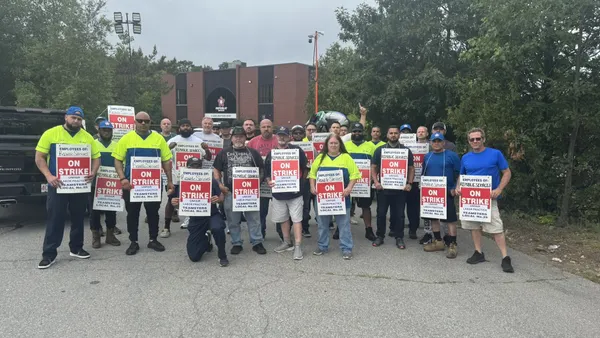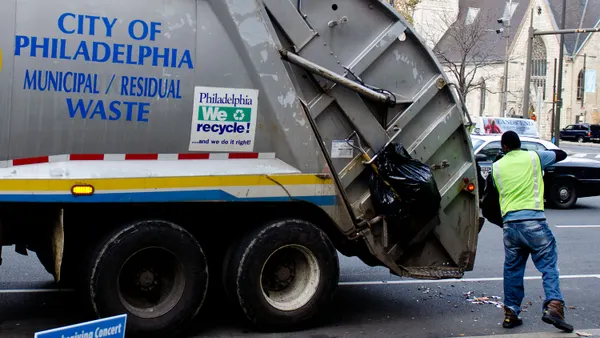Dive Brief:
- The California Department of Resources Recycling and Recovery (CalRecycle) announced Tuesday it is now managing 41 contractor crews from two contractors in the City of Ventura and Ventura County to clear debris and waste from the 281-acre Thomas Fire. The announcement marks the addition of four additional crews of up to five people each.
- So far, crews have removed 26,892 tons of material from damaged properties. This removal includes 325 tons of metals that have been delivered or recycled, 11,000 tons of concrete that have been delivered or recycled, and almost 15,000 tons of debris and ash that has been disposed.
- Debris removal only comes after the California Department of Toxic Substances Control removed hazardous debris, including asbestos and batteries. Lance Klug, a spokesperson for CalRecycle, told Waste Dive that the agency knows debris contractors will come into some contact with hazardous materials, "which is why CalRecycle makes sure our contractors adhere to the highest safety standards. We require all workers to be hazmat trained and wear respiratory protection and protective suits."
Dive Insight:
The Thomas Fire of last year was the largest in modern California's history, impacting thousands. The wildfire also required a larger response from CalRecycle than other wildfires during the same year — just 25 contractors were operating in northern California counties after previous wildfires in the region.
According to Klug, soil, ash and debris are going to one of three local landfills, but metals, concrete and materials with asbestos are being transported to specialized facilities. The time spent arranging or deciding where to send different material — including potentially toxic or hazardous material — can be costly, ultimately preventing residents from returning to their property.
The data concerning tonnage from CalRecycle is also indicative of the dramatic differences between disaster types. The agency has handled tens of thousands of tons of ash, soil and concrete, but zero tons of green waste. Compare this to the U.S. Virgin Islands, where the tonnage of collected green waste debris sparked debate between incineration, composting or landfilling as a chosen debris-clearing method.
It's all indicative of the critical importance of planning for different disasters ahead of time — something that, among the day-to-day of collecting curbside material and plowing snow from roads, is too easily relegated to the backburner.









